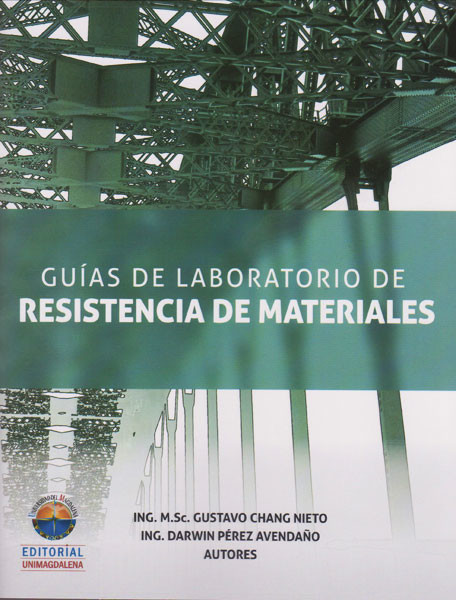
- Edición: 1
- Año de edición: {{getMes(14-1)}} de 2015
- No. de páginas: 62
- Formato: Impreso
- Idioma: Español
- ISBN Impreso: 9789587460711
Guías de laboratorio de resistencia de materiales
View title and subtitle in English
Title in English: Laboratory guide for resistance of materials
Introducción 1.Ensayo De Tracción En Metales 2.Ensayo De Compresión 3.Ensayo De Flexion 4.Ensayo De Cortante 5.Ensayo De Impacto 6. Ensayo De Torsion
Description in English: In these Strength of Materials laboratory guides, readers will find the best practical complement to the theory governing Mechanics of Materials. The guides are written in simple and clear language, without sacrificing the accuracy and academic rigor required of academic texts. They should serve as material for pre-reading and consultation by students taking the Materials Resistance course.The sequential structure of this work's content aligns with the theoretical progression of the course. It begins with the tension test, which studies the mechanical properties of materials such as elasticity modulus, yield stress, proportional limit, ultimate stress, resilience modulus, and toughness modulus. Next, the compression test is discussed, which allows for the determination of a body's resistance (stress) or deformation capacity under compression loads.The bending test evaluates specimens subjected to transverse loads and supported at their ends, aiming to study concepts such as tension, compression, neutral axis, inertia, elastic modulus, and plastic modulus. The tension test of bolted and/or welded joints is conducted to calculate the shear resistance of bolts and weld beads.The impact test measures the energy a body can absorb until it breaks. This involves dropping a pendulum with potential energy onto the piece, converting the energy INSERT INTO kinetic energy upon contact. The difference between the initial and remaining energy after the test, accounting for friction losses, represents the energy absorbed by the material.Finally, the torsion test evaluates the shear stresses of a body under torsional moments. This test determines the shear rigidity modulus and delimits the elastic and inelastic limits.View description in English
Introducción 1.Ensayo De Tracción En Metales 2.Ensayo De Compresión 3.Ensayo De Flexion 4.Ensayo De Cortante 5.Ensayo De Impacto 6. Ensayo De Torsion
- OCDE (Área, Subárea y Disciplina) Ingeniería y tecnología > Ingeniería civil > Ingeniería civil
- Colección y serie: Ingeniería y tecnología > Ing. Civil y construcción
- Categoría: Libro de formación o apoyo pedagógico
- THEMA: Construcción de edificios y materiales; Construcción e industria pesada
- BISAC: TECNOLOGÍA E INGENIERÍA > Construcción > General
- DEWEY: Tecnología (ciencias aplicadas) > Ingeniería y operaciones afines > Ingeniería y operaciones afines > Mecánica de ingeniería (mecánica aplicada) y ciencia de materiales
- Edición: 1
- Año de edición: 2015
- ISBN impreso: 9789587460711
- DOI:
- No. de páginas: 62
- Medidas en cm (Alto, Ancho, Grosor): 24, 17, 0,6
- Idioma: Español

